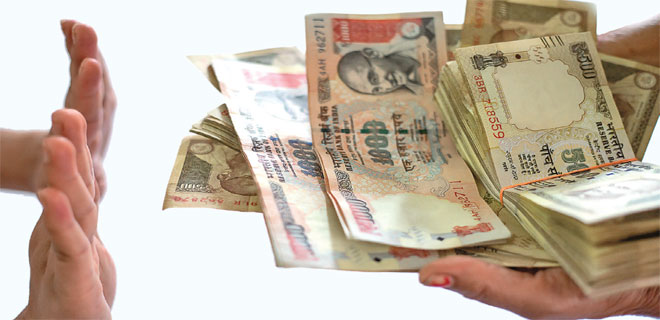Demonetisation's impact: How it will impact India's GDP growth
It is too early to guess the impact of demonetisation on GDP growth

Before we understand the implications of the demonetisation, it is important to note that black money or unaccounted cash and black economy are two different things, with the latter thriving on the former. Conservative estimates put the size of the black economy in India at Rs 45,000 billion. Various independent estimates indicate that up to 20 per cent of such black economy is in the form of cash possession (which arises from bribery, business malpractices, etc.) and the rest in land, real estate, jewellery, etc. It is this cash that the government is trying to unearth through this demonetisation move. However, the best thing is that the government is also trying to lay out a road map of dis incentivising the creation of black economy through better tax administration and reforms among other things simultaneously. The assessment of the impact of demonetisation on GDP growth is tricky because the costs and benefits cannot be properly quantified till the whole exercise is over. Also, imputing loss is dependent on cash intensity of the sector involved and how important is the disruption of one sector affecting other sectors. The three objectives [counterfeit currency, smuggling (narcotics and gold) and hoard cash] that demonetisation aims to achieve have considerable mutual interactions and to separate their individual impacts on GDP growth is a challenging exercise. Abolishing of higher denomination will not end the so-called black money problem, for it is more of systemic and structural issue and requires resolving the circularity between the cause and the cure.
As we understand currently, there will indeed be a short-term impact on sectors like automobiles, realty, jewellery, consumer durables, textiles, construction and cement. This may possibly last over two quarters and it will impact the GDP adversely. However, given that consumption of luxury goods (excluding gold) is generated out of black cash holding, a part of the intermediate consumption in this sector may be diverted to production of basic goods that may lift GDP over the medium term.
From the point of view of the banking sector, it will be a huge positive. There could be a permanent addition to banking sector deposits of at least 1.5-2 per cent of GDP, which could push down lending rates and boost consumption. This would also bring more people in the tax net possibly enabling the government to migrate to a lower direct tax regime for individuals.
Interestingly, ever since this demonetisation exercise, there has been indeed a positive shift in behavioural pattern of individuals. For example, customers in the age group of 26-40 are witnessing a big jump in internet banking. There has also been a huge surge in cash deposited through cash deposit machines in rural areas across all age-groups.
This is heartening as it indicates that the process of formalisation of the Indian economy that started through Jan Dhan Yojana is still continuing. Usage of mobile banking has also increased in rural areas, and as expected, transaction has increased at POS and e-com.
Notwithstanding such encouraging trends, cash still remains elusive as RBI has replaced a third of currency deposited at the banks till date. We believe the enormity of the exercise is too large to be solved but we are hopeful that the situation will get much better by January 2017. One way for the government to look at this problem is to go state by state and see what is withdrawal to deposit ratio. If this number is significantly lower than the national average, then government may put more cash in such states due to high requirement.
In the end, this move is a pragmatic one, as it will ensure India’s journey from an informal economy to a more formal economy. But the government must continue its efforts towards an enabling atmosphere to lower black economy through measures. As the next step, the government could announce a national gold policy.
This will make available a platform for the general public, temples, trusts, etc., for allowing them to sell gold and thereby establish a market for the same. Simultaneously, electoral reforms and reforms in the real estate market are additionally imperative in order to get into the bottom of India’s black economy problem.
Watch out for
- Permanent addition to banking sector deposits of at least 1.5-2 per cent of GDP.
- Push down lending rates and boost consumption.
- Hike in usage of mobile banking in rural areas.
Soumya Kanti Ghosh is Group Chief Economic Advisor, SBI









